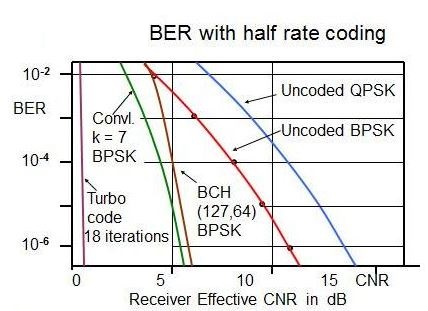Assignment:
Error correcting codes are widely used on satellite links that have a low overall CNR in the receiver. A particular link has a clear air overall CNR of 11.0 dB and overall CNR of 6.0 dB when rain is in the downlink path. The receiver implementation margin is 0.5 dB. Modulation on the link is BPSK.
The following questions are addressed:
a. Using the graph of BER vs CNR for BPSK, estimate the BER in clear air and in the specified rain conditions when no error correction is used, and when convolutional encoding with k = 7 is applied to the transmission. The bit rate is the same in each case.
b. How much additional transmitter power would be needed to allow the link to use QPSK instead of BPSK so that the bit rate could be doubled?
c. If the transmitter power can not be changed, what change would have to be made to the receiving earth station to increase CNR by 3 dB?
